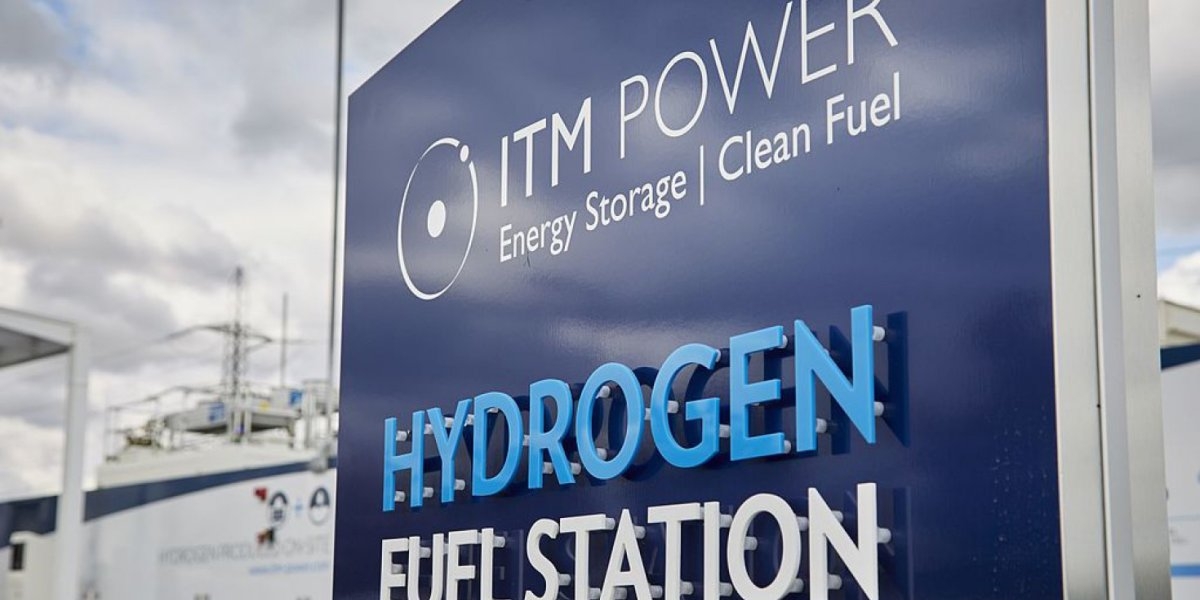HYDROGEN
Hydrogen is often considered a green energy carrier that has the potential to replace oil, but little is known about its environmental and climate impacts. Over the next three years, CICERO will therefore study what these impacts are.
PHOTO BY BEXIM, CC BY-SA 4.0 / WIKIMEDIA COMMONS
Project details
“There is an enormous interest in hydrogen as a part of the future energy landscape. There has been a lot of research on how hydrogen can be used, but little is known about what happens when hydrogen is emitted into the air,” says Maria Sand.
She is a senior researcher at CICERO Center for International Climate Research and the leader of a new research project entitled HYDROGEN, which over the next three years will study the environmental and climate impacts of hydrogen emissions.
In June this year, the Norwegian government launched its first hydrogen strategy to stimulate the development of new hydrogen-related technology. This strategy highlights the importance of hydrogen as an energy carrier whose increased use can lead to lower greenhouse gas emissions and create values for Norwegian business.
There is an enormous interest in hydrogen as a part of the future energy landscape. There has been a lot of research on how hydrogen can be used, but little is known about what happens when hydrogen is emitted into the air.
Around the same time, the EU also introduced its own hydrogen strategy, which states that hydrogen will be “essential to support the EU’s commitment to reach carbon neutrality by 2050 and for the global effort to implement the Paris Agreement while working towards zero pollution”.
Almost impossible to prevent hydrogen leakage
“Increased use of hydrogen will lead to higher hydrogen emissions, which again will impact the concentration of gases in the atmosphere. With today’s technology, it is almost impossible to prevent carbon leakages, which occur not only when hydrogen is used, but also when it is produced and transported,” said Sand.
“Although politicians have expressed their willingness to stimulate more use of hydrogen, little attention has been paid to the potential environmental consequences of this. Before we embark on a large-scale transition to a hydrogen economy, it is important to study thoroughly and as soon as possible how increased use of hydrogen will impact both the climate and the environment,” she said.
Increased hydrogen emissions will influence the chemical composition of the atmosphere, and particularly the concentrations of methane and ozone. If higher hydrogen emissions can lead to an increase in methane and ozone, hydrogen may contribute to global warming.
Changes to the ozone layer would also influence the amount of harmful UV radiation that reaches the Earth’s surface, and if ozone reaches ground level, it would be toxic to both humans and animals, and may reduce crop yields.
The project HYDROGEN will develop important knowledge that can help policymakers and other decision-makers understand both the advantages and the disadvantages of transitioning to a hydrogen economy. As governments in many countries are eager to start the transition soon, it is essential that the project produces results quickly.
The project is funded by the Research Council of Norway and will be completed in June 2024. Scientists in Norway, France, the UK and the U.S. are involved in the project, and its partners include energy companies Equinor, Gassco, Shell and Statkraft, and the Norwegian Shipowners’ Association.
Facts about the HYDROGEN project:
Full name of project: HYDROGEN – Climate and environmental impacts of hydrogen emissions
Duration and founding: The project HYDROGEN is led by CICERO Center for International Climate Research and financed by the Research Council of Norway. The project will run for 3.5 years, from 1 January 2021 and until 30 June 2024.
Aim of the project: The project HYDROGEN will study the environmental and climate impacts of hydrogen emissions and develop important knowledge that can help policymakers and other decisionmakers understand both the advantages and the disadvantages of transitioning to a hydrogen economy.
Research institutes involved in the project:
- Norway: CICERO Center for International Climate Research
- France: Laboratory of Climate and Environmental Sciences (LSCE)
- United Kingdom: Rdscientific, University of Reading and University of Edinburgh
- United States: US National Center for Atmospheric Research and University of California, Irvine
Project partners:
Five large companies / organisations are partners in the HYDROGEN project and will contribute with data on hydrogen leakages. These partners are involved in the project because they consider hydrogen an important near-future focus area and would like to get a better understanding of the potential environmental and climate impacts of hydrogen emissions:
- Equinor
- Gassco
- Shell
- Statkraft
- The Norwegian Shipowners’ Association
